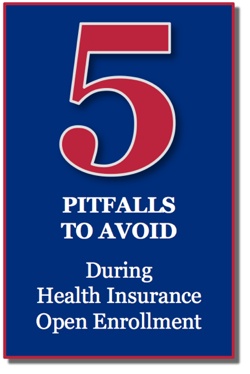 Do you want to become a burden to your family? Of course not.
Do you want to become a burden to your family? Of course not.
Do you have homeowner’s insurance to protect your home in case of a fire? Chances are you do. It’s a very scary thought and – wisely - very few people think twice about protecting themselves against such a possibility.
Less Than 8% of Adults Have Long Term Care Insurance: Why?
OK, next question… Do you have long term care insurance (LTCI)? There’s a good chance that your answer is no. Recent statistics show that less than 8% of U.S. adults and about 10% of seniors have long-term care insurance. And yet, nearly 10 million people in the U.S. (37% under age 65 and 63% over age 65) needed some form of long-term care in 2000 (see http://longtermcare.gov/ for more information). It’s estimated that almost 70% of people turning age 65 will need long-term care at some point in their lives.
Bottom line… Your chances of needing to make a claim for long-term care are considerably higher than making a claim for a fire.
What Exactly is Long Term Care Insurance?
LTCI helps pay the cost of care for seniors or individuals with disabilities if they should ever need it over a long period of time. It helps pay for the cost of care for individuals unable to perform the basic activities of daily living (ADLs) -- such as bathing, eating, getting in and out of bed, dressing, and going to the bathroom – over a long period of time.
Depending on the policy, LTCI may cover home care, assisted living, adult daycare, respite care, hospice care, nursing home, and Alzheimer's facilities. Certain policies will pay for a visiting or live-in caregiver, companion, housekeeper, therapist or private duty nurse.
The cost of an LTCI policy is based on:
- Your age when you purchase the policy
- The maximum amount that a policy will pay per day
- The maximum number of days/years that a policy will pay
- Any optional benefits you choose, such as benefits that are adjusted for inflation
What is the Cost of Long-Term Care and Who Pays for it if You Don’t Have LTCI?
According to the U.S. Department of Health and Human Services, in 2010 the average cost for long-term care was more than $6,000 per month in a nursing home, more than $3,000 per month in an assisted living facility, or $19-$21 per hour for a homemaker or home health aide.
One of the biggest misconceptions about long-term care is that it’s covered by Medicare. Medicare only pays for a maximum of 100 days if you need skilled services or rehabilitative care in a nursing home. It does not pay for non-skilled assistance with Activities of Daily Living (ADL), which make up the majority of long-term care services.
Medicaid pays the largest share of long-term care services, but only applies if your income is below a certain level and you meet minimum state eligibility requirements.
Other federal programs such as the Older Americans Act and the Department of Veterans Affairs pay for long-term care services, but only for specific populations and in certain circumstances
Benefits of Long-Term Care Insurance
More and more people are purchasing LTCI to protect themselves in the event that they need long-term care. Some of the benefits include:
- Ensuring that you will be taken care of should you need long-term care
- Allowing you to live as independently as possible without burdening your family
- Allowing you to spend family time with your children rather than caregiver time
- Protecting your savings
- Premiums paid on a long-term care insurance product may be eligible for an income tax deduction
Learn More about LTCI
 If you want to ensure that you can live independently and not become a burden to your family and friends in the event that you need care over a long period of time, give us a call at (800) 947-1270 or (610) 775-3848 or contact us by email. The sooner the better!
If you want to ensure that you can live independently and not become a burden to your family and friends in the event that you need care over a long period of time, give us a call at (800) 947-1270 or (610) 775-3848 or contact us by email. The sooner the better!



 According to a May 2013 report by the non-profit Council for Disability Awareness (CDA), there is a sharp mismatch between the high value employees place on their ability to earn a living vs. their financial preparedness to handle a disability that would threaten their income as evidenced by having adequate levels of disability insurance.
According to a May 2013 report by the non-profit Council for Disability Awareness (CDA), there is a sharp mismatch between the high value employees place on their ability to earn a living vs. their financial preparedness to handle a disability that would threaten their income as evidenced by having adequate levels of disability insurance. With the end of the year fast approaching, many employees are starting to become anxious. It’s that time of year again, the time when they get to tweak their health insurance benefits. While this may be exciting to some, the responsibility to choose the right health insurance plan can be a source of tension for others.
With the end of the year fast approaching, many employees are starting to become anxious. It’s that time of year again, the time when they get to tweak their health insurance benefits. While this may be exciting to some, the responsibility to choose the right health insurance plan can be a source of tension for others.
 A section of The Affordable Care Act requires health insurance providers to spend at least 80 percent of dollars they receive from premiums on patient care, or be forced to send a rebate to patients. This may seem like a good deal for patients, but health economists say the provision can only lead to more expensive insurance.
A section of The Affordable Care Act requires health insurance providers to spend at least 80 percent of dollars they receive from premiums on patient care, or be forced to send a rebate to patients. This may seem like a good deal for patients, but health economists say the provision can only lead to more expensive insurance.
 Our agency, which is located near Reading, PA, will go in-depth to analyze insurance topics and make the confusing understandable. We'll do our best to make insurance coverage and terminology clear and concise, so you can make informed decisions on the coverage you need and get the savings you deserve. We hope to educate, inform, and engage you with our new blog, and we are eager to hear your questions and feedback.
Our agency, which is located near Reading, PA, will go in-depth to analyze insurance topics and make the confusing understandable. We'll do our best to make insurance coverage and terminology clear and concise, so you can make informed decisions on the coverage you need and get the savings you deserve. We hope to educate, inform, and engage you with our new blog, and we are eager to hear your questions and feedback. 




